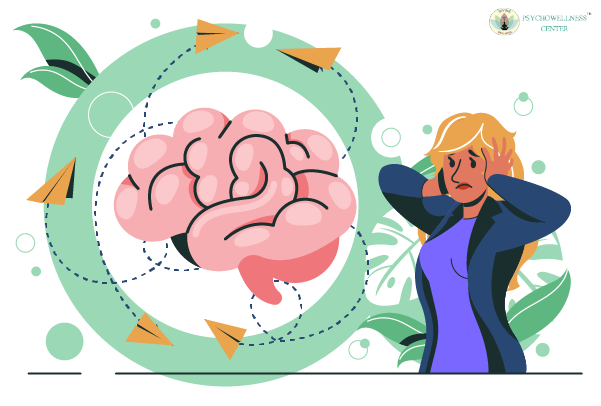Best ABA Therapist in Dwarka Sector 13 Dwarka Delhi

Aggression is one of the most challenging behaviours seen across various populations, including children with autism, individuals with developmental delays, and adults experiencing mental health issues. The aggressive behaviour can manifest in many ways such as hitting, biting, throwing objects, verbal outbursts, and even self-injurious actions. Managing and reducing aggression requires a multifaceted approach, and one of the most effective methods in behavioural psychology is Applied Behaviour Analysis (ABA).
What is Applied Behavior Analysis (ABA)?
Applied Behaviour Analysis (ABA) is a therapeutic approach grounded in the science of behaviour. ABA uses systematic interventions to improve specific behaviours, teach new skills, and reduce undesirable behaviours, such as anger issues. By analysing the antecedents, behaviours, and consequences of a situation, ABA therapists can understand what triggers aggressive actions and implement strategies to modify them. The ultimate goal of ABA is to replace negative behaviours with more appropriate, functional responses, fostering long-term positive change.
The Role of ABA in Managing Aggression
When working with individuals exhibiting aggression, ABA takes a proactive and individualised approach. Here’s how ABA can be applied to manage aggression:
1. Functional Behaviour Assessment (FBA)
The first step in any ABA intervention is conducting a Functional Behaviour Assessment (FBA). This assessment helps identify the underlying causes or triggers of aggressive behaviour by analysing what happens before (antecedent) and after (consequence) the behaviour occurs. It’s crucial to recognise the function of aggression, whether it’s attention-seeking, avoidance of demands, access to tangible rewards, or self-regulation. Understanding the function allows therapists to target specific behaviours in a way that is individualised and tailored to the person’s needs.
2. Antecedent Interventions
Once the function of aggression is identified, the therapist can work on antecedent interventions. These interventions involve modifying the environment or situation that triggers the aggressive behaviour. For example, if aggression is triggered by frustration in completing a task, the therapist might provide clearer instructions or break down the task into smaller, manageable steps to reduce frustration. In this phase, therapists work on preventing the behaviour before it even occurs by adjusting external factors.
3. Teaching Alternative Behaviours
One of the most critical components of ABA is teaching alternative, more acceptable behaviours that serve the same function as aggression. For instance, if a person acts aggressively to gain attention, ABA therapists will teach the individual a more appropriate way to seek attention, such as asking for help or using a communication device. By reinforcing these alternative behaviours through positive reinforcement (e.g., praise, rewards), individuals are motivated to use the new behaviour rather than resorting to aggression.
4. Consequent Interventions
The next step is to modify how the environment responds to the aggressive behaviour. This involves teaching appropriate consequences for aggression and reinforcing desired behaviours. For example, if a child displays aggressive behaviour, instead of giving in to their demands (which reinforces aggression), the therapist might apply a non-reinforcing strategy, such as redirecting the child to a calming activity. Similarly, when positive behaviours are displayed, therapists immediately provide praise or tangible rewards to reinforce these behaviours.
5. Reinforcement Schedules
ABA also employs reinforcement schedules, which involve the delivery of reinforcement at specific intervals, depending on the behaviour. Consistent reinforcement is key to ensuring that new behaviours replace old, undesirable ones. For example, reinforcing a child every time they use an appropriate method to ask for attention helps solidify the desired behaviour.
6. Generalisation of Skills
Once the individual learns to manage aggression in a controlled environment, ABA therapists work to ensure that these skills generalise across different settings, people, and situations. Practising in various settings (e.g., at home, at school, or in social interactions) makes the learned behaviour more likely to occur outside of therapy sessions, allowing individuals to apply what they've learned in their everyday lives.
The Role of Psychowellness Center in Managing Aggression
At Psychowellness Center, a team of highly qualified and experienced therapists employs ABA techniques to help individuals manage and reduce aggression. The center is known for offering a range of psychological services, including therapy for challenging behaviours, mental health support, and personal development. The team consists of professionals like Dr. R.K. Suri, Mr. Utkarsh Yadav, Ms. Sakshi, and others, who are skilled and top psychologists in applying evidence-based interventions like ABA to address a variety of behavioural concerns.
- Dr. R.K. Suri, a clinical psychologist with his extensive experience in treating psychological disorders, offers expert guidance in understanding the behavioural intricacies of aggression and helping individuals with various emotional challenges, including anxiety, depression, stress, burnout and anger management.
- Mr. Utkarsh Yadav, a skilled therapist at the center, specialises in behaviour therapy, and CBT and works closely with children and adults to identify and reduce aggressive behaviours. His expertise in ABA allows him to tailor interventions to the unique needs of each individual, ensuring effective outcomes.
- Ms. Sakshi Dhankhar, another dedicated therapist at Psychowellness, employs a compassionate and structured approach to work with clients who exhibit aggression, focusing on developing emotional regulation strategies and teaching alternative coping mechanisms.
The Psychowellness team integrates ABA with other therapeutic approaches to provide holistic care, which addresses the root causes of aggression and helps clients build long-term coping skills.
Conclusion
Managing aggression through behavioural interventions such as ABA can significantly improve the quality of life for individuals and their families. At Psychowellness Center, therapists use ABA in combination with other therapeutic techniques to address the underlying causes of aggression, teaching individuals healthier ways of coping with their emotions and behaviours. By employing strategies such as Functional Behaviour Assessment, teaching alternative behaviours, and consistent reinforcement, ABA helps replace aggression with more positive actions, fostering long-term behavioural change.
With the right guidance, individuals struggling with aggression can experience relief, improved emotional regulation, and a better quality of life. If you or someone you know is dealing with aggression or other challenging behaviours, consider seeking help from professionals at Psychowellness Center, where therapy is designed to cater to individual needs for lasting results.
Contributed by Ms Tanu Sangwan, Counselling Psychologist
References:
- Miltenberger, R. G. (2016). Behavior modification: Principles and procedures (6th ed.). Cengage Learning.
- Cooper, J. O., Heron, T. E., & Heward, W. L. (2020). Applied behaviour analysis (3rd ed.). Pearson Education.
- Lovaas, O. I. (2003). The role of behaviour analysis in the treatment of autism. Journal of Applied Behavior Analysis, 36(1), 1-3.
Related Stories

Anxiety Is An Emotion



SHARE